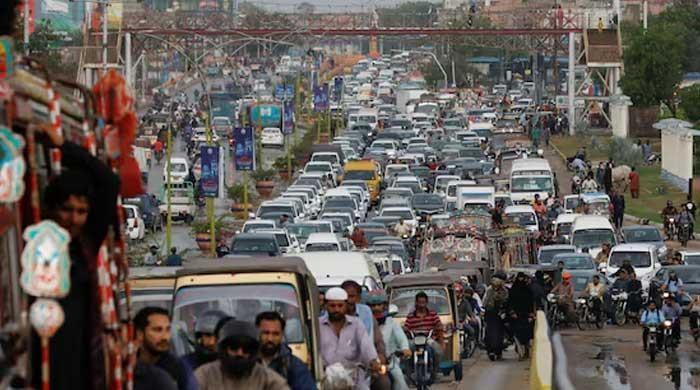Karachi, one of the most densely populated urban centers in the world, faces many challenges linked to town planning and infrastructure. One of the most persistent problems in the old areas of the city is the serious shortage of parking spaces, associated with the generalized height of the police, in particular traffic and local staff of the police, who take advantage of the situation to extract bribes from motorists and helpless motorcycleists. The problem has increased over time and has become a cause of daily frustration, financial burden and, in many cases, public resentment.
The ancient Karachi areas, like Saddar, Kharadar, Mithadar, Bolton Market, Burns Road and certain parts of Garden, have never been planned by thinking of motor vehicles. These areas were developed during British colonial domination and reflect the architectural and civic provision of a bygone era. Narrow streets, tight buildings and a lack of open spaces leave little or no room to park a large number of vehicles. Despite this, these areas remain important in commercial and residential areas, attracting thousands of people every day.
The situation has worsened in recent years due to the increase in the possession of vehicles. While the middle class has developed, more families have cars and motorcycles. However, the city’s infrastructure has not followed the pace. There are no appropriate multistorey parking spaces in most of the old areas, and the few that exist are either poorly maintained or non-functional. This means that drivers and bicycle owners are forced to park wherever they find space, which is often on the trails, near intersections or along the already narrow roads. The absence of appropriate regulations and parking facilities leads to a serious congestion of traffic, especially during peak hours.
In the midst of this chaos, the behavior of law enforcement organizations has become a matter of concern. Instead of helping to manage the situation or guide motorists to safer parking options, many police officers consider the parking crisis as an opportunity for personal earnings. It is now common to attend the traffic police and other uniform staff members, in particular motorcyclists, under the pretext of verifying documents or highlighting minor violations. The real objective, in most cases, is to solicit a bridge pot.
Motorists in areas like Saddar complain that even when they park their vehicles carefully and without hindering traffic, they are often approached by police demanding money. If someone refuses to pay, it is threatened with heavy fines, their vehicles are tight or towed, or they are harassed in other respects. Motor owners, often working class who cannot afford such repeated payments, are particularly vulnerable. Many of them complain that even with valid documents and helmets, they are arrested and invited to “pay something for tea”.
There is also a network of so -called parking suitors, some of which are officially appointed by the municipal authorities, while others operate without any legal authority. In both cases, many of them work in collusion with the police. They receive parking costs with drivers without issuing receipts and share the product with local police officials. In the absence of regulated parking, these attendants delimit public spaces as personal car parks and charge arbitrary amounts. When questioned, they often react with threats or point to a nearby police officer who is probably part of the arrangement.
This culture of exploitation is seriously rooted and difficult to contest. Ordinary citizens, already struggling with the increase in inflation, mediocre public transport and high fuel costs, feel helpless. There is no dedicated forum or complaint mechanism where people can report these incidents with hope of action. Attempts to complain in local police stations often lead to additional harassment or are completely ignored. Meanwhile, senior officials of the city traffic and city administration turn their eyes or publish routine declarations that make little difference on the ground.
There have been several attempts in the past to regulate parking in Old Karachi. The Karachi Metropolitan Corporation (KMC) and Karachi Transport Ittehad, now disappeared, proposed the construction of underground parking spaces or on several floors, but most of these projects have blocked or failed due to the lack of political will, poor planning or corruption. The Empress Market Parking Plaza, formerly praised as a solution to the circulation problems of Saddar, remains underused due to problems of access and maintenance. Likewise, the parking proposals of my Jinnah Road have never materialized in practical solutions.
What worsens the question is the total absence of alternative transport options. If people had reliable, clean and safe public transport, many would gladly leave their cars and bikes at home. But Karachi’s public transport system is in ruins. The rickshaws are expensive, the buses are overcrowded and dangerous, and the carpooling services are not affordable on a daily basis. Consequently, people are counting on private transport, which increases only to the number of vehicles on the roads and exacerbates the parking problem.
The increase in the number of motorcycles has created its own set of problems. Bikes take up less space but are easier targets for extortion and theft. Motorcyclists often park their vehicles in small corners, but even then, they are not spared by the gourmet police staff. Many say that they keep small denominations of money in their pockets specifically to reimburse the police, if they are arrested. It is part of the cost of daily trips. The psychological assessment of this harassment should not be underestimated. He created a climate of fear, anger and distrust in public institutions.
In addition, the lack of good urban planning continues to add fuel to the fire. Since older buildings are replaced by shopping centers and shopping centers, there is no application of the statutes of buildings forcing developers to include parking spaces. The result is huge structures without any parking provision, reversing more vehicles in the streets. When complaints are raised, the answer is often that the terrestrial mafia and powerful developers are too influential to be regulated.
The media sometimes highlighted this problem, but coverage tends to be sporadic and lack of follow -up. There are few in -depth surveys or supported campaigns to expose the link between parking attendants, the police and corrupt officials. Without public pressure and true political will to solve these problems, it is unlikely that the situation will improve.
To solve these problems, a several -strict approach is necessary. The city needs appropriate urban planning which takes into account the realities of vehicle growth. Several tax spaces must be built in old areas, and existing ones must be improved and made accessible. Technology can also play a role. For example, digital park, mobile applications and centralized complaint systems could bring some transparency to the system. More importantly, police reforms must be implemented to tackle the question of corruption and height. Agents found guilty of extortion should be punished publicly to give an example.
Community involvement is also essential. Local residents and business owners should be consulted in planning and application decisions. If people feel that they have an interest in maintaining order and fairness, they are more likely to cooperate. Civil society organizations and urban planners should be involved in the formulation of policies to ensure sustainable solutions adapted to people.
The parking crisis in the old karachi areas does not simply concern space. It is a symptom of deeper failures in governance, planning and the police. The daily suffering of ordinary citizens, the uncontrolled power of the police and the growing frustration in the streets must be taken seriously. A city cannot work smoothly when its residents are treated as criminals for simply trying to park their vehicles. It is time for the authorities to listen to people and take significant measures to restore order, equity and dignity in public life.
The writer is a seasoned journalist and a communications professional. It can be reached at [email protected]




